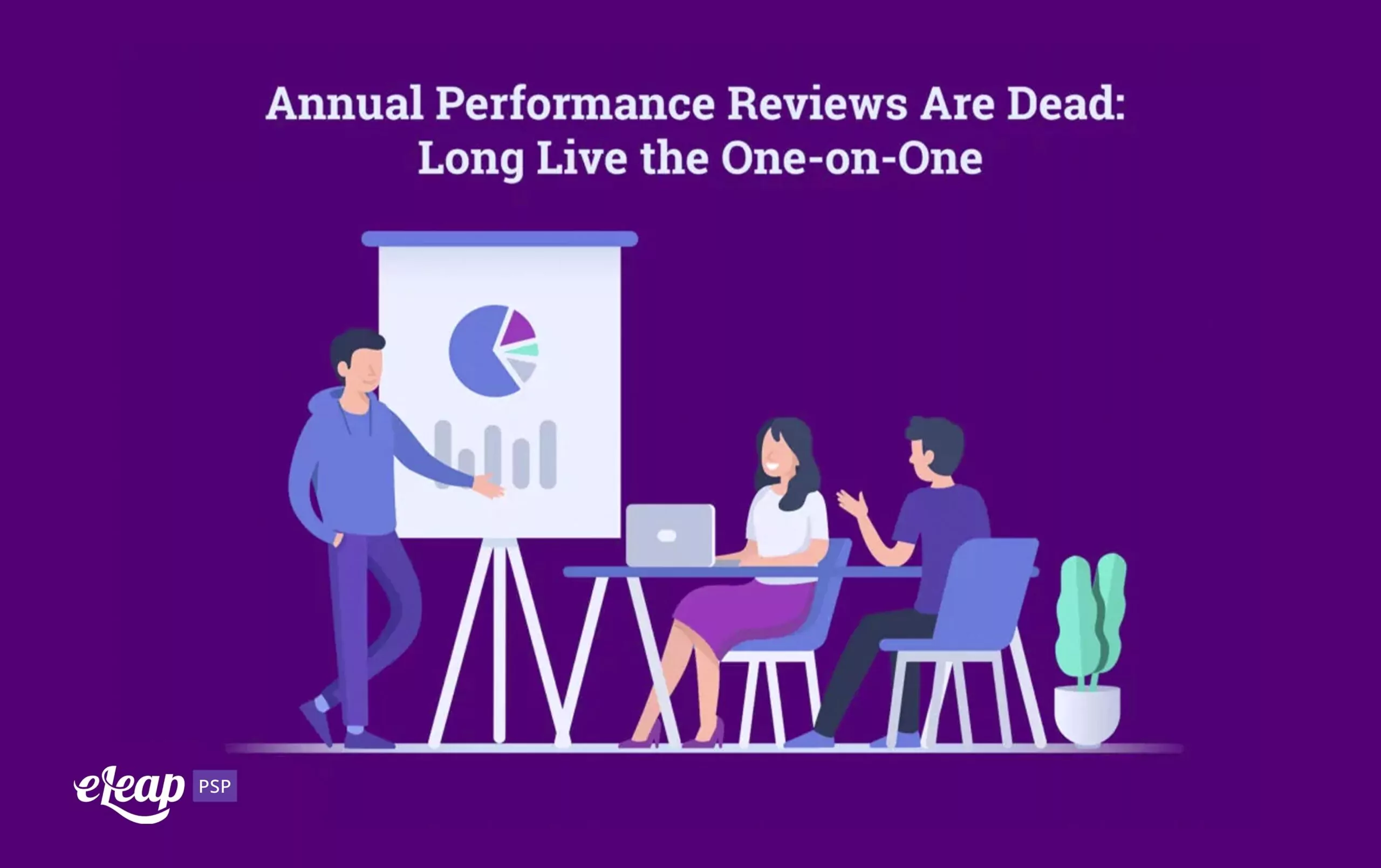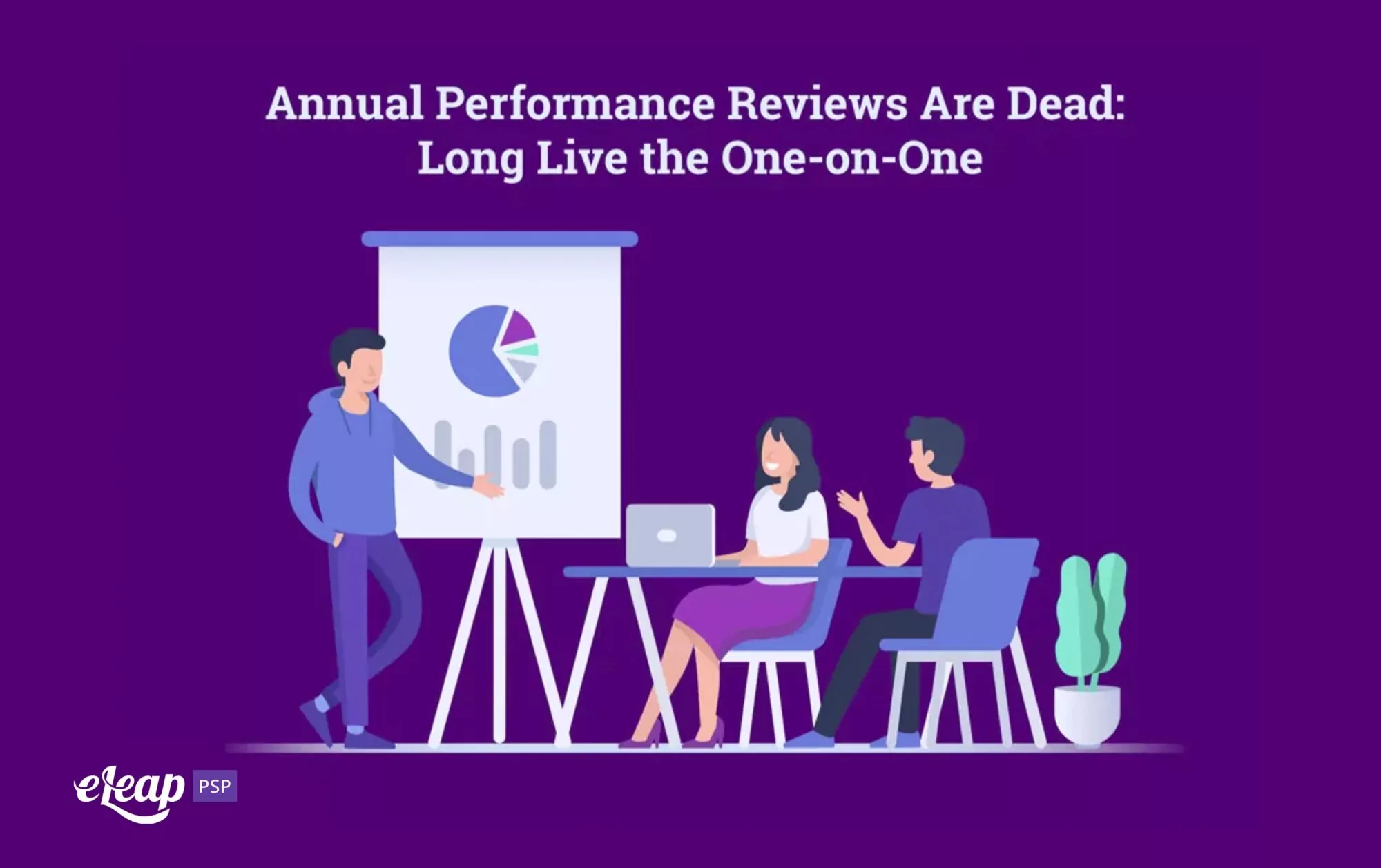Annual Performance Reviews Are Dead: Long Live the One-on-One

If you’ve missed the news, here it is: the annual performance review is dead, although many companies might not yet realize it. It’s actually been deceased for a long time, and employers have only been propping up its body. The value of these reviews, long questionable, has finally faded away (if it was ever there in the first place).
In its place, we now hail the one-on-one, held multiple times per year. It’s agile, flexible, empowering, and proven to help your teams succeed. Of course, if you’re not entirely on board with the idea of annual reviews being a complete waste of time, or you’re unfamiliar with how a one-on-one works, some clarification might be helpful.

Why Performance Reviews Are Ineffectual
Before we explore what one-on-ones bring to the table, let’s dive into why annual performance reviews are being phased out (and should have been eliminated a long, long time ago). We’ll bullet point the high points for you below:
- Reflection’s just not possible – With an annual performance review, employees are somehow expected to remember all their “wins” from the previous year. No one can do that, so these reviews are frustrating and ineffective from the very beginning.
- They were focused on the carrot and the stick – Annual performance reviews are about just one thing: punishing a lack of progress. If you’re honest with yourself, you can admit that. They focused on the old carrot and stick method. However, even the carrot was a stick, because it held the employee’s livelihood hostage to their adherence toward what were often ambiguous, ill-defined goals.
- They were too often excursions into punitive action – For most employees, an annual performance review led invariably to feelings of inadequacy, ineffectiveness, and being disconnected from the organization. This was particularly true when managers used them as an excuse to enforce punitive action.
- They had little if anything to do with the employee in question – While performance reviews were supposed to highlight an employee’s performance, they rarely did that. Instead, it held their actions up to some imaginary yardstick based not on reality, but on some ideal dreamed up by corporate management who likely had never worked in the employee’s position a day in their lives.
These are just a few of the reasons that annual performance reviews no longer play a role in some of the world’s most successful companies. As an interesting note, a lot of that success came after they phased out reviews, too.
One-On-Ones and Your Team’s Success
Now that we’ve seen the drawbacks of performance reviews, it’s time to explore one-on-ones and what they can offer. How do they work? What benefits do they bring?
- Strengths-Based Conversations: One of the most critical considerations with a one-on-one is that it isn’t based on what a team member brings to the company. The focus has shifted entirely to the employee. These are discussions based on their personal and professional strengths and how they can develop them now and over time. Often, that’s coupled with not just short-term goals, but also career development goals. Where does the employee want to go within the company, or even further down the road? All of that can and should be tied into these discussions.
- Not Past-Focused: Performance reviews are strictly focused on the past. Often, they look at things that happened weeks, or even months and months ago. Because of that, they are usually irrelevant to the employee. One-on-ones instead focus on things that have happened recently, within the past few days. They also focus on what’s happening now, and what will happen in the future. Because they’re not past-focused, they’re much more relevant to the employee and far more engaging.
- Ability to Focus on Past Accomplishments: With one-on-ones, team members note their accomplishments and wins each time. With those records, it becomes easier to look back and focus on past accomplishments. They’re less hazy and ephemeral and more concrete, able to inform the current discussion in new ways.
- Tracking Goals: Again, because one-on-ones are essentially ongoing conversations, and each session is recorded, it becomes simpler for team members to track their goals. This allows everyone to see progress toward major milestones, but it can also highlight shifts in goals and objectives over time, and more.
- Shows Their Impact on the Team: One-on-ones (with supporting documentation over time) help illustrate exactly what an employee does and how it impacts the team. It’s not about what they bring to the company so much as it is an illustration of their value as a critical part of the team. This helps them feel more connected, engaged, and valuable.
- Manager Feedback: A critical part of the one-on-one method is that the team member can give the manager feedback. That’s critical. It turns what would otherwise be a one-way flow of information into a two-way conversation. It also helps empower the team member while providing important feedback to managers about their own performance. All too often, managers operate in a vacuum – are they effective? Are they supporting their teams? What more could they be doing to ensure success for everyone? Team member feedback on manager performance helps provide that information and connect the dots.
Support with Check-Ins
While one-on-ones are the new performance reviews, they cannot exist alone. The goal here is to create an ongoing conversation and provide support for employees. You need more than once-per-month meetings to do that. Weekly check-ins are what help you connect those regular one-on-ones. These are brief meetings that help managers and team members stay connected, moving forward, and on target. They’re also valuable opportunities to make course corrections in real-time and to provide vital feedback.
It’s a Brand New World
While performance management is as critical as it ever was, we’ve developed powerful new tools to help streamline and improve things. Annual performance reviews are dead and gone. One-on-ones and check-ins now help improve morale, productivity, and engagement across the board. It’s a brand new world and one that we’re glad has finally arrived.